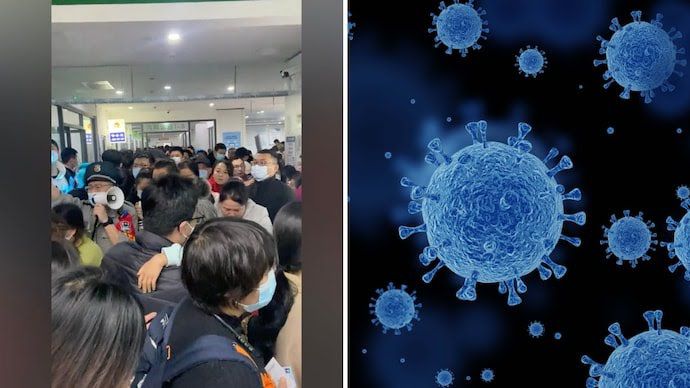China is undergoing an upsurge in respiratory diseases, with human metapneumovirus (HMPV) emerging as a key concern. Last month, the country began piloting a monitoring system for winter illnesses, including pneumonia of unknown origin.
Following this, several social media posts suggest that the HMPV disease is spreading quickly and mostly affecting children and the elderly, overwhelming hospitals and crematoriums.
While China’s health authorities have not mentioned HMPV as an epidemic, the country, in December 2024, revealed that they were going to set up a protocol to handle unknown pathogens.

The National Disease Control and Prevention Administration said that they would establish a procedure for laboratories to report and for disease control and prevention agencies to verify and handle cases.
An official statement revealed that data for acute respiratory diseases showed an upward trend in overall infections in the week of December 16 to 22.
One social media post, under the handle SARS-CoV-2 (COVID-19), claims that China has declared a state of emergency.
Besides HMPV, multiple viruses are claimed to be spreading quickly in the country, including influenza A, Mycoplasma pneumoniae and Covid-19 virus.
A social media handle also reported that paediatric hospitals are strained with rising cases of pneumonia and ‘white lung’ cases.
With human metapneumovirus (HMPV) spreading rapidly in China, here’s what you need to know about the respiratory disease.
WHAT IS HMPV?
Human Metapneumovirus (HMPV) is a virus that causes symptoms quite similar to common cold. In usual cases, it causes cough or wheeze, runny nose or a sore throat.
In young children and the elderly, HMPV can be severe. Those with weakened immune systems, the virus can cause serious illness.
SYMPTOMS OF HMPV
It is an upper respiratory infection, but it can sometimes cause lower respiratory infection like pneumonia, asthma flare-ups or make chronic obstructive pulmonary disease (COPD) worse, according to Cleveland Clinic.
According to the US Centers for Disease Control and Prevention (CDC), HMPV was discovered in 2001, and belongs to the Pneumoviridae family along with respiratory syncytial virus (RSV).
While the duration of the illness can vary depending on the severity of the illness, the usual incubation period is 3 to 6 days.
As per CDC, symptoms of HMPV infection could progress to bronchitis or pneumonia and are similar to other viruses that cause upper and lower respiratory infections.
PREVENTION OF HMPV
To avoid the spread of HMPV, health officials suggest washing hands frequently with soap and water for at least 20 seconds. Avoid touching the eys, nose or mouth area with unwashed hands and to avoid close contact with people who are sick.
Those you have cold-like symptoms should wear a mask while stepping out or while sneezing or coughing. Washing hands quite often is necessary as well.
TREATMENT OR VACCINE FOR HMPV
Currently, there’s no specific antiviral treatment for HMPV. No vaccine has been developed either. General supportive care is given to address the symptoms.
IS HMPV SIMILAR TO COVID-19?
HMPV and Covid-19 have very similar symptoms. Both the viruses cause respiratory issues like coughing, fever, wheezing, sore throat and shortness of breath.
According to a study published in Virology Journal in April 2024, after Covid-19, the cases of HMPV increased in a Henan, China. HMPV infections were almost detected and hospitalised every day between April 29 and June 5, 2023, the study revealed.
IS HMPV GOING TO BE THE NEW PANDEMIC?
While many social media posts and reports claim that China is grappling with another epidemic, the health authorities have no official statement about a possible state of emergency.
With no specific treatment or vaccine available for HMPV, awareness about the virus can help promote precaution and prevention.